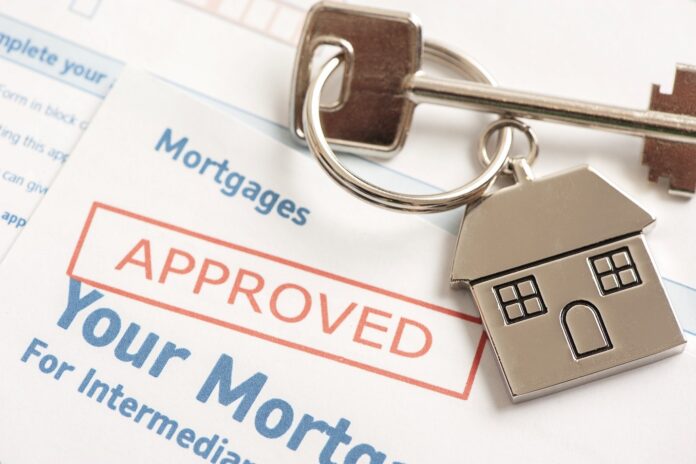
With house prices on the increase, it’s a good time for those looking to sell their home, yet for many potential buyers, high mortgage rates alongside rising rent and property costs have created financial barriers, particularly for younger first-time buyers or those with other financial constraints such as low gross income or a low credit score.
While financing is still considered the primary method of purchase, there are several alternatives to traditional mortgages that are worth considering. The suitability of each of these will depend on your situation, and some may also involve a high degree of risk, so while exploring, it’s best to do so with caution.
Cash Offers
Housing-related Google searches like “sell my house fast Virginia Beach” show how the cash offer market has risen in recent years. This method of purchase is typically used by those with enough liquid assets to be able to pay upfront.
For this reason, cash offers are typically associated with investors and older property owners seeking their next home, although more recently they have gained popularity among other groups, making up over a third of condo and single-family sales in the third financial quarter of 2023.
6 Alternative Mortgage Lenders

By definition, an alternative mortgage lender (also known as a B-lender or subprime B-lender) refers to lenders outside of a conventional bank. Some examples of alternative mortgages include:
1. Multiple Collateral Mortgages
Asking a friend or acquaintance to put their own property up for sale to help you access mortgage approval, offering double the assets and security to the lender.
2. Rent-to-Own
Alternatively known as lease-to-buy, here the owner of the property acts as a lender, with a portion of the rent going towards down payment. While useful in terms of saving, tenants should beware of high rents, additional fees, and shifting property prices.
3. Seller Financing
One example of this is a VTB (or “vendor take back”) mortgage, where the seller offers a loan for a portion of the selling price, retaining equity and a percentage equal to the loan amount until the vendor take back is paid off.
4. Private Lending
While the guidelines for these are more relaxed in terms of things like financing, most private lenders do require a 15% down payment, with higher interest than you would see from traditional lending.
5. B-Lender Mortgages
While traditional mortgages operate based on equity, alternative lending takes a more flexible approach, relying on other sets of criteria. Unlike A-lender mortgages offered by major banks, these tend not to be federally regulated, and so have fewer restrictions and more flexibility.
6. Bridge Loans
While this short-term loan is not designed to garner immediate approval for a bank mortgage, it can help by improving the buyer’s financial standing so that they are better able to qualify for credit from a traditional lender.
Despite their comparatively high rates, alternative mortgages offer similar services to traditional banks, and some may even offer products conventional banks are unable to, such as interest-only mortgages or mortgages specifically designed for poor credit owners.
Other Loans

While a mortgage is a loan secured with personal property or real estate, a loan involves a relationship between a lender (or creditor) and borrower (or debtor). Some examples include:
Balloon Loans
A balloon loan refers to a short period of low or no monthly payments. While this initially appears positive, balloon loans are so-called because of the subsequent lump sum (or “balloon payment”) the borrower must repay following this period.
Piggyback Loans
A piggyback loan is essentially dual mortgage loans: two monthly fees, two interest rates; two closing costs to consider. This method can reduce the need to take out a jumbo loan or private mortgage insurance, but can also cause difficulties if you decide to refinance or sell your home.
Personal Property Loans
Typically offered by home manufacturers (except some conventional mortgage lenders), this type of loan tends to involve high-interest rates with a relatively short payoff period, which could make managing repayments difficult.
Home Equity Loans
While borrowing against a life insurance policy offers easy access, low interest, and no negative credit, it also has its downsides: besides potentially having to wait long periods to borrow and the risk of your policy being terminated, the borrower’s death benefit is reduced, affecting beneficiaries. While possible, loans aren’t necessarily the best option, especially for those who may struggle to make repayments on time. Many also carry high-interest rates, adding to the expense.
Borrowing From Friends or Family
This form of financing is essentially another type of loan, written up by a lawyer under a written contract and promissory note (an accountant should also be consulted to make sure it doesn’t show up as a gift, which could make it subject to gift tax).
While there are companies specializing in home loans between relatives and family mortgages, this can be risky in terms of its effects on relationship dynamics and is generally not recommended, unless the borrower is either certain they can repay the amount in full, or offered the sum without expectation of repayment.
Government Assistance

Government-Backed Mortgages
These programs are offered to veterans, homeowners in USDA (non-urban) approved areas, and buyers with low credit scores are generally considered low-risk, as there are few or no requirements for a down payment.
Down-Payment Assistance
Local or state down payment programs are one of the lower-risk options for first-time buyers and those who plan to use their property as their primary home. This still involves financing, but it’s one of the more accessible methods for those who qualify.
When considering any of these methods, do your research and tailor your method of financing to your current situation, while strengthening your position through keeping a high credit score and a low income-debt ratio can also help.
If you are unsure about how best to move forward, free or low-cost financial advice can be found through your bank or credit union in addition to organizations such as the Financial Planning Association or the Consumer Financial Protection Bureau.











